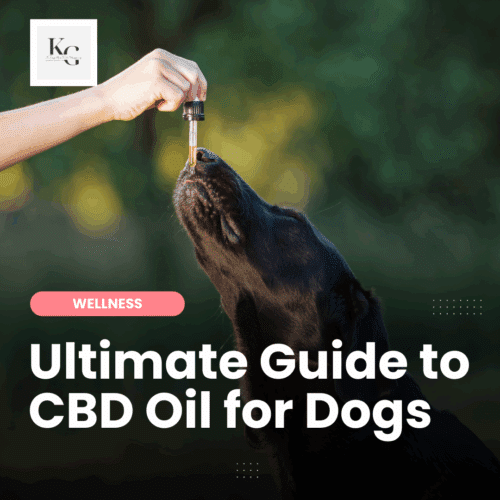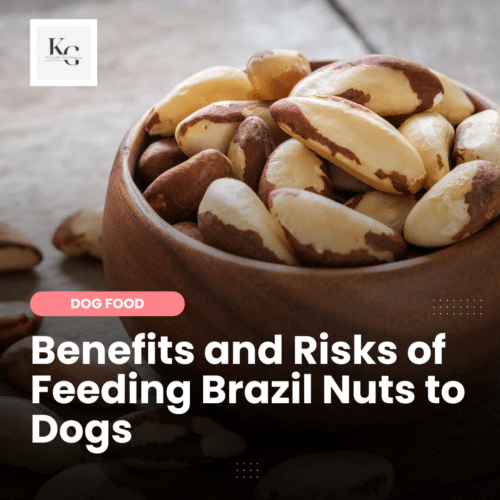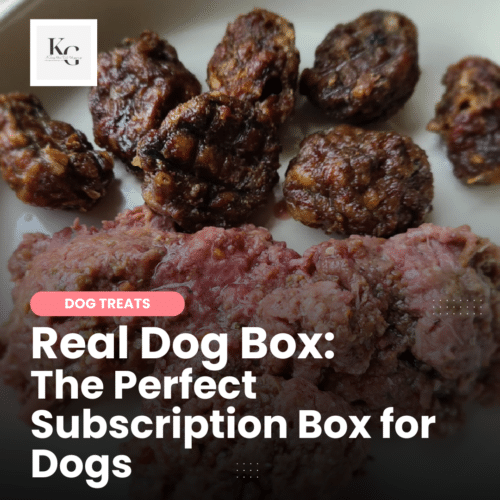Keep the Tail Wagging is supported by pet parents. I occasionally earn a commission (at no additional cost to you) when you click through an affiliate link to one of my favorite products. Thank you for your support. Read More
Are you new to raw or someone who feeds commercial raw, but you're uncomfortable switching to DIY? When I started feeding raw eight years ago, I was feeding Darwin's Natural Pet Food, and although they are still one of my favorite brands, raising four big dogs makes commercial raw too expensive for my budget. Therefore, I switched to DIY seven years ago. I used to spend up to ten hours doing meal prep once a month, and although I knew raw feeding was best for my dogs, I began to wonder if the money I was saving doing DIY was worth the time that I spent thawing, grinding, chopping, and prepping raw dog food.
I tried making it easier using a base mix by The Honest Kitchen, but eventually, it didn't work for my dogs, and I was having trouble justifying feeding potatoes. While they may be healthy for humans, they're not, in my opinion, great for dogs.
Mixing up meals one item at a time didn't work for me. So, this is a long story about how I landed on Dr. Harvey's website and why I love their base mixes. No potatoes, great ingredients, and it ” balances” the raw dog food recipes I make for my dogs. I want to share my meal prep routine so others can feed their dogs a healthier diet without breaking the bank or melting their brain.
Why I Use a Base Mix
Years ago, a fellow raw feeder told me that people using a base mix are too lazy to learn how to feed their dogs. I laugh at the memory of this today because she wasn't wrong. She wasn't right either.
I use a base mix because…
- it's easier than making meals from individual ingredients
- it works for my dogs, and nutrient testing shows that their diet is balanced
- it's affordable; I buy a bag of base mix when it's on sale (sales are often)
- no software needed
I occasionally nutrient test my dogs, and their test results are excellent. I've only had to make two adjustments in the past four years.
- I add more vitamin B (via supplementation or food)
- I make sure the food dishes are rinsed thoroughly after washing
That's it! I don't have to do math. I'm not stressing over macro and micronutrients. And raw feeding is easy. This is what works for my dogs, and if you've found yourself overwhelmed with raw feeding, this may work for you, too.
Now, on to my meal prep routine.
Easy Raw Dog Food Meal Prep Routine
This is crazy easy.
Tools that I use in My Meal Prep
Many of these things can be found at an affordable price at your local Walmart. All except the knives. Don't go cheap on your knives.
- 2-3 large roasting pans (for thawing)
- several 8-quart stainless steel bowls (for mixing)
- high quality meat clever
- sturdy (or wooden) mixing spoons
- mashed potato masher (makes breaking down meat easier)
You can also invest in a high-quality meat grinder or a mixer; these tools will make life easier, too, but they're not necessary.
1 – Pull Food from the Freezer and Thaw
The day before meal prep, I pull food from the freezers – 80% muscle meat, 10% bone, 10% organ meat. Because nothing in my freezer is labeled this way, an example of what I would thaw from the freezers includes:
- 24 pounds of ground quail (has bone) or ground duck (has bone)
- 8 pounds of ground organ meat; I alternate between GreenTripe.com and grass-fed organ meat sourced from local farms
If the meat I thaw doesn't include bone like the quail and duck listed above – venison and pork, for example, this is what I would thaw from the freezers:
- 30 pounds of venison (or pork)
- 8-10 pounds of ground duck wings (includes bone)
- 12 pounds of organ meat
I do not do math to determine if what I've thawed equals 80/10/10. Those ratios are simply a guideline – not a rule.
2 – Hydrate a Base Mix
As I shared above, I use a base mix in my meal prep and it saves me time and money while making meal prep SOOOOO easy. I mix everything in 8-quart bowls, starting with one cup of Dr. Harvey's Raw Vibrance or Paradigm for each bowl. I add hot water to each bowl to start the party (hydrate the base mix).
I alternate between Raw Vibrance and Paradigm. Raw Vibrance doesn't use any synthetic ingredients; Paradigm is low glycemic.
3 – Add Ingredients
I divide the ingredients between the number of bowls I'm using that day. I use a potato masher and a sturdy spoon to break the meat down and mix everything. If you have a KitchenAid mixer, it'll make this much easier and quicker. However, it does add a new step (or two) to the meal prep.
4 – Transfer Food to Freezer Safe Container
I stocked up on two sizes of sturdy freezer-safe containers at a local store, swapping them out every few years as needed. Yes, they're reusable plastic. No, I don't know what country they were made in. If you don't do plastic, then stock up on glassware.
- Large containers are for food that is meant for all of the dogs to share.
- Slightly smaller containers are for individual foods like duck feet and duck necks.
When the food is mixed thoroughly, I transfer it to freezer-safe containers and store it in the freezer (or the fridge if I'm feeding the food right away).
5 – Feed My Dogs and Add Supplemental Foods (or Supplements)
I feed my dogs twice daily. To figure out how much to feed my dogs, I used online raw food calculators and adjusted each dog's diet based on their weight gain/loss. And, yep, I own a pet scale. When I'm prepping the daily meals, I add the following to the bowls a few days a week:
- pasture-raised, organic raw eggs
- canned or fresh sardines or mackerel, alternating with canned oysters
- a tablespoon of vegetable blend or Gussy's Gut
- supplements specific to each dog
And that's it. See what I mean? Meal prep can be easy.
So, What About Meal Prep for Puppies
Unlike others, I'm not 100% comfortable preparing meals for puppies younger than six months of age. If a puppy joins our family at the traditional 8-10 weeks, I feed commercial raw, working with the company to better understand what I need to add to the diet to support their growth.
At six months, I have a better understanding of what an individual puppy would need in their diet, and I slowly transition them to DIY. When Apollo joined our family, he was seven months I transitioned him cold turkey to DIY raw feeding and added more bone (calcium/phosphorus) and fermented fish stock and sardines (gut health/Omega 3 fatty acids) to his diet to support his growth and brain development.
I had him nutrient tested at two years of age and his results came back with a score of “EXCELLENT!”
How I Know that My Dogs' Raw Diet is “Balanced?”
So, did you notice the quotes around “balanced?” Yeah, that's my way of saying, “balance according to whom?” I have a blog post and YouTube video about this, so check it out above.
But, if you're reading this, you may still wonder if my meal prep works, and I don't blame you. I mentioned ParsleyPet Nutritional Blueprint Testing earlier. I only nutrient test my dogs randomly instead of annually, because it's expensive when you have multiple dogs. I tested my dogs six months after I began using Dr. Harvey's and a year later to confirm the results. After making a few tweaks to the meal prep, I'm confident that my dogs are getting everything they need.
So while some people prefer to delve into the macro/micronutrients in their dogs' diet, this blog post is for those who are like me and don't want to do lots of math or follow a complicated book to feed their dogs. So many people have fed raw without using the NRC guide and without software before social media came along.
What I'm doing for my dogs (dogs, not puppies) is working for my pack. I'm sharing because I hope this is an excellent start for your pack, too.

















I am restarting our raw feeding journey and this was so helpful. First time around I got overwhelmed with all the moving parts and was diying everything. Then covid hit and I lost my job, so we went back to kibble (adding fresh foods where I could). Now we are starting again, but this time just going with dr. Harveys paradigm as a base to eliminate the chaos. You have been very helpful in guiding and not making it feel like it has to be a specific way! Thank you. I almost starting to ferment raw milk, thanks to Billy lol. XOXO Melissa, Obi and Ahsoka
Yes, I test my dogs every other year using ParsleyPet. Thankfully, the tests have come back good since I started this routine. I mention this in the blog post, however, if it wasn’t clear, please feel free to ask me any questions. It’ll help me add clarity to the blog post. Thanks.
Hi Kimberly
I was wondering if you’ve ever done a hair test analysis on any of your dogs?
My 5 dogs have been raw fed all of their lives. All seem healthy, active and thriving. Annual blood tests are always excellent. I did a hair test analysis on my oldest boy and it was a real eye opener. Tested high in heavy metals and toxins. I’ve cut out all sea foods, canned and fresh, only using filtered water now and working on detoxing them.
No, I still add raw meaty bones to my dogs’ diet because I add it for more than just the calcium; I primarily feed RMBs to satisfy my dogs’ chew drive and clean their teeth.
Great info! Thanks. Glad to have found you.
Sorry but I was referring to the crushed egg shells and bonemeal that is in the Dr Harveys mix. If you are giving that as part of their meal , then do you cut back on raw meaty bones? thanks.
Great question. If I were to add a raw meaty bone to the bowl, like two duck necks, I wouldn’t bother with the ground duck wings. OR, I’d add more muscle and organ meat to my blend with the understanding that I’ll be adding raw meaty bones to the bowl. I don’t feed ground eggshells because it throws off the calcium/phosphorus ratio and since I have so many sources of calcium, including green tripe, I save the eggshells for my garden.
Hope that helps.
My question is this: my dogs already get raw meaty bones as part of their food each day. Won’t the extra calcium from the bone meal and eggshells be too much? I know you are not a vet but I just want your opinion.